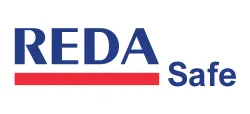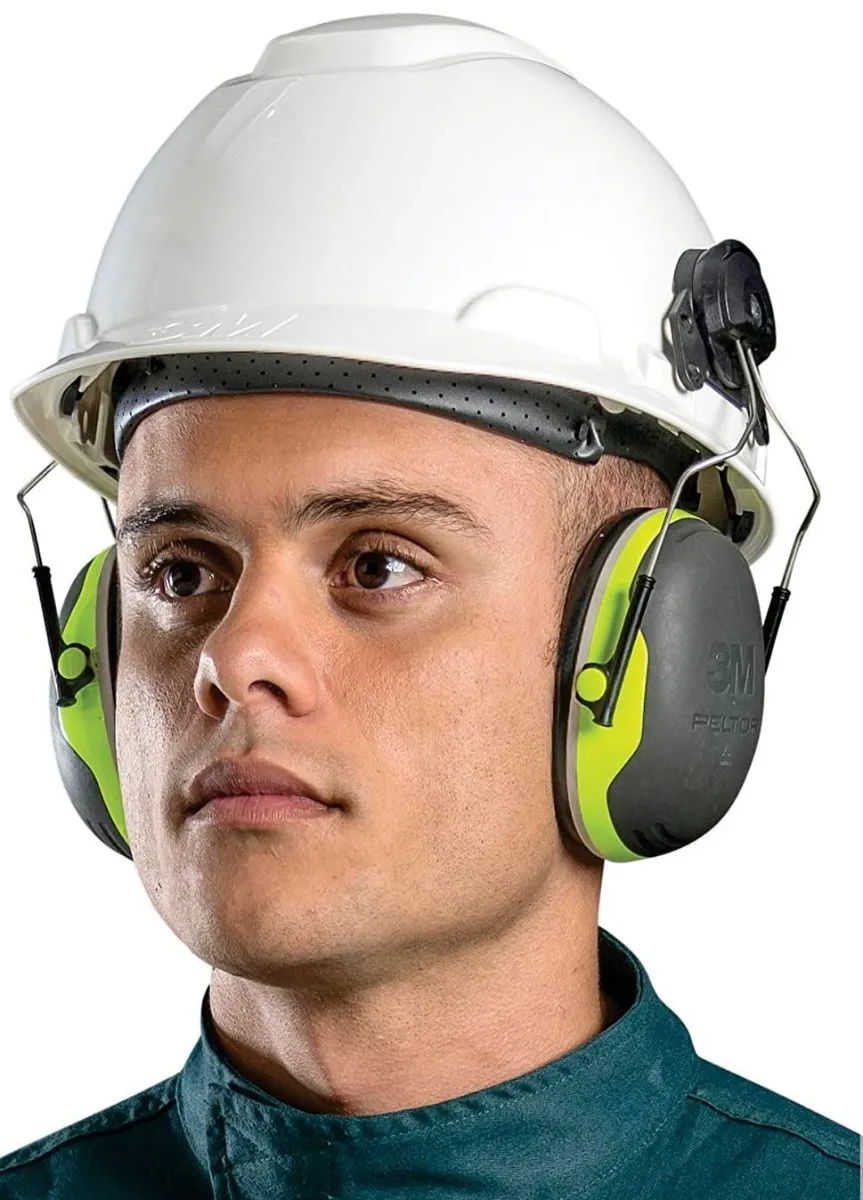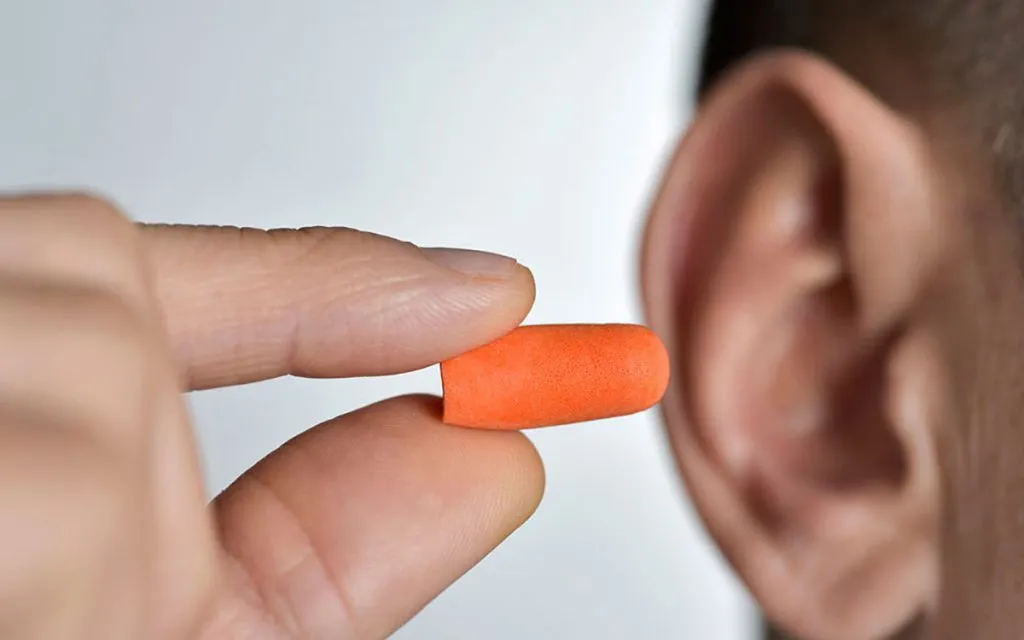Ear Plugs Vs. Ear Muffs: Which Are Better?
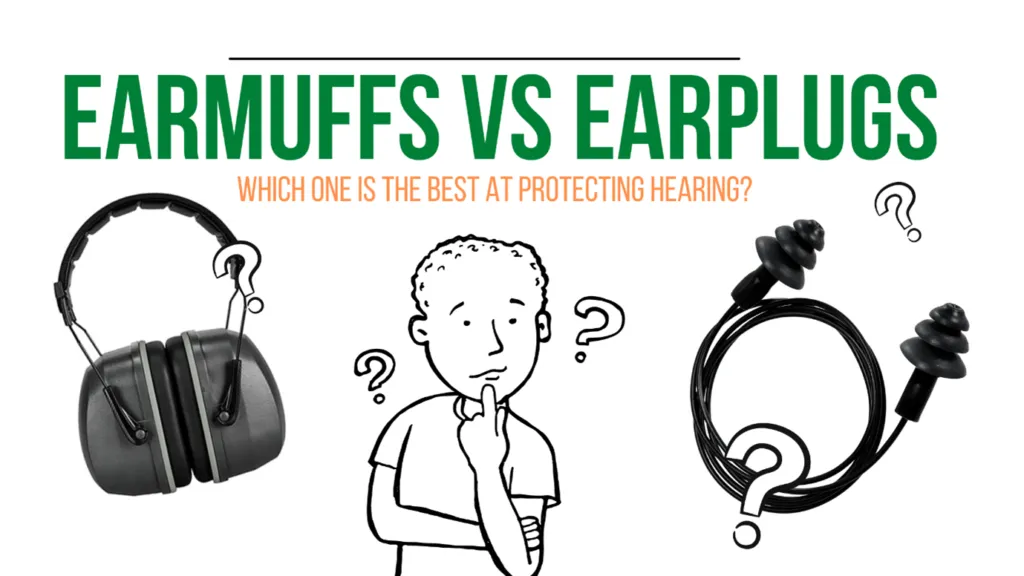
Ear Plugs vs Ear Muffs - How to Choose Your Ear Protection
The Occupational Safety and Health Administration (OSHA) has official limits on the decibel level American workers can be exposed to during an 8-hour shift. OSHA's permissible exposure limit is 90 A-weighted decibels (dBA) over 8 hours. However, the organization also states that for every 5 dBA increased, the amount of time the worker can be exposed reduces by 50 percent.
To elaborate further, a worker can safely be exposed to 90 dBA for 8 hours, but if the noise level increases to 95 dBA, they can only be exposed for 4 hours before suffering hearing damage. That is, unless they are wearing adequate hearing protection.
Advantages and Disadvantages of Ear Muffs
One of the biggest advantages of ear muffs is that they don’t need to be custom fit. Most models are designed as a one-size-fits-all solution, and some can be easily adjusted to fit snugly on the wearer’s head. Because of their size, they’re easy to see and hard to lose. In addition to protecting employees from loud noises, they also keep their ears warm, making them ideal for those whom have to brave cold temperatures on the job, such as construction workers and landscapers.
While they can do a lot of good, ear muffs do come with their fair share of disadvantages. For one, they can be extremely uncomfortable in hot and humid conditions. Because they fit snugly over the ears, they do a great job of trapping in heat, which isn’t ideal when temperatures reach 80 degrees or higher. Also, people with glasses may have difficulties because the ear hooks may prevent the muffs from securely fitting. Additionally, since they don’t directly block the ear canal, ear muffs may not provide as good of a seal against extreme noise in comparison to ear plugs.
Advantages and Disadvantages of Ear Plugs
Because they fit directly into the ear canal, ear plugs offer a higher level of protection from noise than ear muffs.
Those employed in factories, foundries, or on the tarmacs at airports are suitable candidates for this type of ear protection. They are easy for a worker to carry with them in a sealable plastic baggie or a hard-shell case. And, for workers wearing glasses or a safety helmet, there is no discomfort or interference.
On the negative side, ear plugs are sometimes hard to fit in the ear. Some instructions require the wearer to pull their ear at a certain angle, ball up the ear plug, and then stick it in their ear canal. If done incorrectly, the ear plug will constantly slip out of the ear canal and not protect the wearer as well as it should. Additionally, their small size makes them easy to lose and hard to see when inside the wearer’s ear.
Ear Plugs Vs. Ear Muffs: Which Are Better?
It depends on the needs of the worker. Ear muffs will get the job done in most situations, but may cause discomfort in areas with higher temperatures. On the other hand, ear plugs fit directly into the ear canal and offer maximum protection from excessive noise. Their only downside is their size. They aren’t the easiest to fit, and they are so small that they can easily be lost.
No matter which is chosen, it’s wise to pay attention to the decibel (dB) rating. Both ear plugs and ear muffs come with a dB rating that tells the user how much noise reduction there will be when the product is worn. For example, if a set of ear muffs has a 30 dB rating, it means the noise level of the environment will be reduced by 30 dB when wearing. So if you’re working with a jackhammer that belts out 120 dB of noise, the muffs would reduce that noise to 90 dB, allowing you to spend more time using the tool before any hearing damage occurred.
Keep in mind that there doesn’t necessarily need to be a choice between one and the other. For those who work under extreme noise conditions and do not need to communicate much while working, it is okay to wear both ear plugs and ear muffs at the same time. In doing so, they are ensuring themselves maximum protection from the threat of hearing damage.
How does NRR change decibels of exposure?
When hearing protection is worn, your level of exposure to noise is based on the NRR rating of the protection device being used. Keep in mind, however, that while the NRR is measured in decibels, the hearing protector being used does not reduce the surrounding decibel level by the exact number of decibels associated with that protector’s NRR. For example, if you are at a rock concert where the level of noise exposure is 100 dB and you are wearing earplugs with an NRR 33dB, your level of exposure would not be reduced to 67 dB. Instead, to determine the actual amount of decibel deduction applied (when decibels are measured dBA which is the most common), you take the NRR number (in dB), subtract seven, and then divide by two. Given the previous example, your noise reduction equation would look like the following: (33-7)/2 = 13. This means that if you are at a rock concert with a level of noise exposure at 100 dB and you are wearing a hearing protector with an NRR 33 dB, your new level of noise exposure is 87 dB. If you are wearing a product with an NRR of 27 it would deduct 10 decibels (27-7/2=10).
*To maximize noise reduction, hearing protectors must be worn properly.
How does wearing dual hearing protectors change NRR?
When hearing protectors are worn in combination (i.e. earplugs AND earmuffs), rather than adding the two NRR numbers together, you simply add five more decibels of protection to the device with the higher NRR. For example, using (NRR 29) Earplug with (NRR 27) Earmuff would provide a Noise Reduction Rating of approximately 34 decibels.

Understanding Noise Reduction Ratings
Noise Reduction Rating (NRR) is a unit of measurement used to determine the effectiveness of hearing protection devices to decrease sound exposure within a given working environment. Classified by their potential to reduce noise in decibels (dB), a term used to categorize the power or density of sound, hearing protectors must be tested and approved by the American National Standards (ANSI) in accordance with the Occupational Safety & Health Administration (OSHA). The higher the NRR number associated with a hearing protector, the greater the potential for noise reduction.
What is considered excessive noise?
While the amount of on-the-job noise exposure can be determined through various testing devices, excessive noise is generally defined as exposure to 85 or more decibels of sound over an 8 hour period.According to OSHA,hearing protection is required for all employees at this degree of exposure. This OSHA Action Level, however, will vary depending upon the decibel level of the surrounding environment. For example, if a worker is exposed to 100dB in a 2 hour period, he or she is also required to wear hearing protection. Each hearing protector product is required to meet the ANSI S3.19-1974 testing of NRR levels.
In all cases where the sound levels exceed the values shown below, a continuing, effective hearing conservation program should be administered.
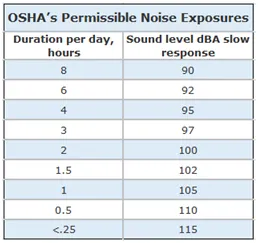
For a better grasp of industry standards, here are a few of the most common producers of noise levels that OSHA considersto be dangerous: lawnmowers, rock concerts, firearms, firecrackers, headset listening systems, motorcycles, tractors, power tools and industrial machinery. The use of hearing protection is strongly recommended during continued exposure to any of the previously listed environments, as all can deliver sounds in excess of 90 decibels.
Painful:
150 dB = Rock Concerts at Peak
140 dB = Firearms, Air-Raid Siren, Jet Engine
130 dB = Jackhammer
120 dB = Jet Plane Take-off, Amplified Music at 4-6 ft., Car Stereo, Band Practice
Extremely loud:
110 dB = Machinery, Model Airplanes
100 dB = Snowmobile, Chain saw, Pneumatic Drill
90 dB = Lawnmower, Shop Tools, Truck Traffic, Subway
Very loud:
80 dB = Alarm Clock, Busy Street
70 dB = Vacuum Cleaner
60 dB = Conversation, Dishwasher
Moderate:
50 dB = Moderate Rainfall
40 dB = Quiet room
Faint:
30 dB = Whisper, Quiet Library
Save Your Hearing
Exposing yourself to high decibel environments can result in permanent damage to your hearing. In the event you find yourself in one of these environments, protect yourself with the proper hearing protection. If you have questions about any of the hearing protection products on our website, please feel free to call our customer service department. Our staff is dedicated to keeping your hearing safe and sound.
